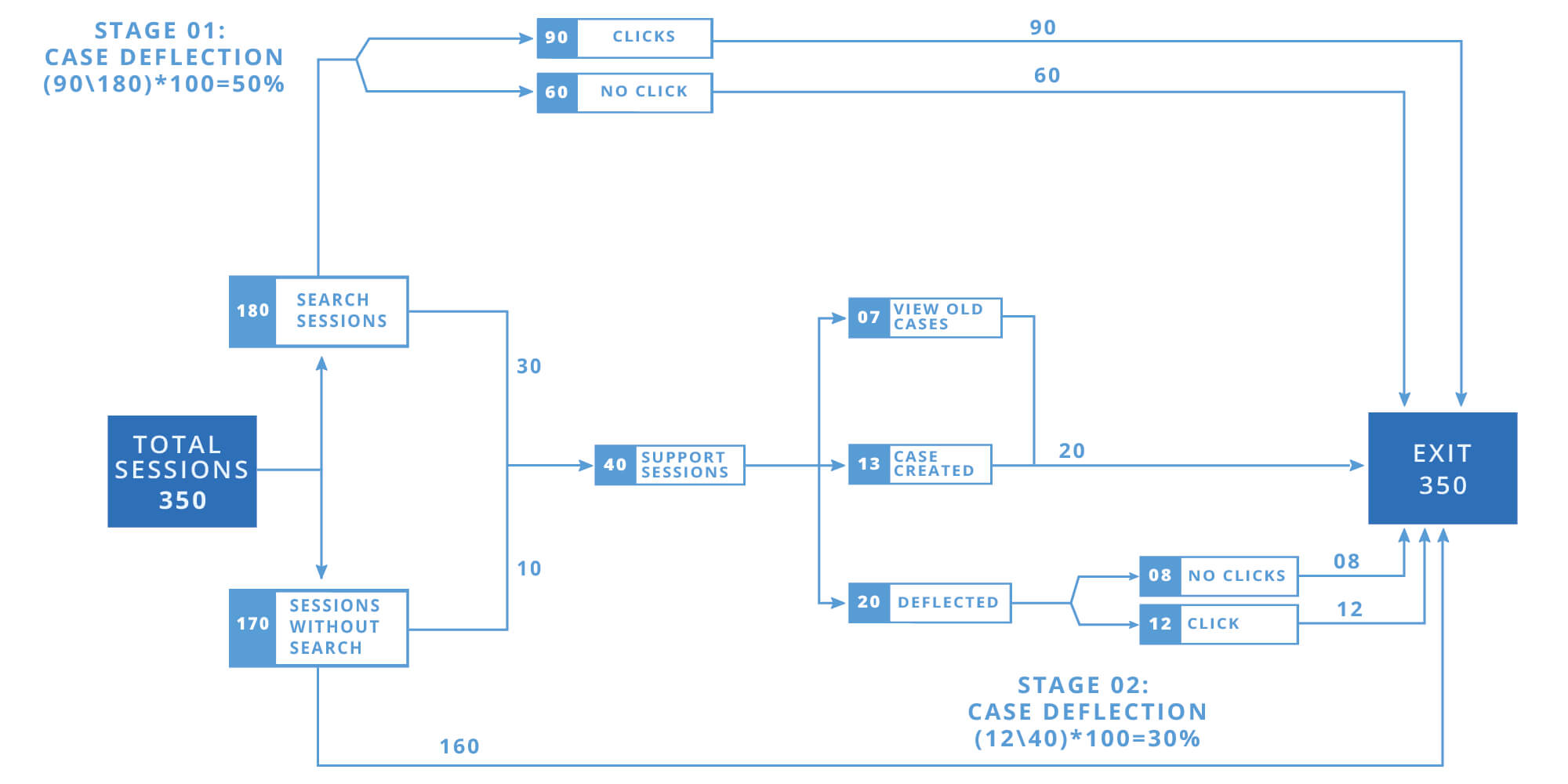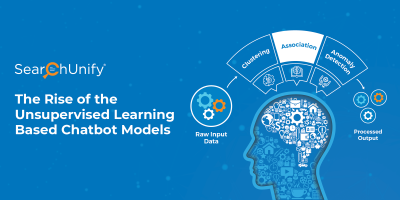
By 2020, customers will manage 85% of their relationship with the enterprise without interacting with a human. – Gartner
You’ve probably set up one or more self-service channels – an online community, or virtual assistants. If you haven’t, it’s time!
Having said that, self-service works wonders only if done right. But how do you know if your self-service is working? To measure that, here are certain metrics that you need to track regularly.
Case Deflection
The most efficient way of quantifying your self-service efforts is measuring case deflection. In the broader sense of the term, case deflection is the rate at which your customers are able to find answers to their questions on their own, without having to reach out to your support team. More precisely, a case is said to have deflected when you’re able to proactively provide a resolution to a user who intended to create a case and as a result, he/she ends up not logging a case. Accordingly, there are two ways you can measure it:
Broader Measure
A case is said to be deflected if a user visits your self-help portal or community, runs a search, clicks on one or more results he/she sees, and leaves without logging a case.

More Comprehensive Measure
This is a more precise way of measuring case deflection, especially for communities and portals where every user does not visit with an intention to create a case. According to this method, a deflection occurs when a user visits the case creation page on your community/portal, asks his/her query, clicks on one of the suggested articles, and leaves without creating a case. In this scenario, a search engine is integrated with the case creation page, the user is asked to enter his/her query in the search bar before logging the case; and it recommends an article to deflect the case.
Self-Service Usage
While case deflection directly translates into self-service success, there are additional metrics you can track to analyze how well your self-service community is doing.
Monthly Traffic
One of the ways to measure self-service on your community is that you keep track of the number of people visiting it per week, per month, and so on. If you’re regularly updating content on your help portals and the traffic is increasing, that’s a positive sign.
You can ask for customer feedback on every page, e.g.‘Was the information provided useful?’ It would be really valuable in identifying the content that is or is not performing well and needs improvement.
Total Number Of Searches
The total number of searches on your help center, community or any other self-service channel is another very important number. A good analytics report gives you details of the top search queries and top search results etc. If the number of searches is increasing on your community over a period of a month, it means you’re creating content, which your community users are finding helpful and engaging.
Total Searches Without Clicks
There could be three reasons for this number:
Scenario 1: The required content doesn’t exist on your portal.
Scenario 2: The content that is available is not relevant enough for the users searching for it.
Scenario 3: The content might be present but is not easily searchable and is hence not clicked.
So getting to know the number of searches without clicks and identifying the reason behind it is a great way to interpret how your self-service community is performing. In the above three cases possible solutions could be:
Solution 1: Fill content gaps – create content that is required but does not exist.
Solution 2: Provide the latest solutions with relevant keywords and enhance search on your portal that would provide relevant results.
Solution 3: Make your content searchable by integrating disparate content repositories.
Successful Searches
Successful searches are those when a user searches for something on your portal and clicks on one of the results. In other words, successful searches are searches with clicks. The higher this number, the more engaging your self-service portal.
Unsuccessful Searches
It wrecks your customers’ confidence in your brand when their searched query receives a blank page with words ‘no results’ pasted on it. Don’t panic. The number of searches that yield no result is an opportunity for your brand to serve the customers better. Identify the content gaps that exist in your knowledge base and create quality content to fill them.
Content Relevance
The quality of content residing over your help page or other channels forms the base of your self-service communities & portals. Relevancy is the key to providing successful self-service. You should check whether the articles, videos or answers you’re providing are relevant enough. Read on to see how:
Average Time Spent Per Article
Measure the average time spent per article by users. See if they’re actually reading the articles they click on or just open the page and get disinterested and close quickly. Session lengths of users over your community give an idea as to how relevant your articles and videos are.
Page Rating
Always ask your users to rate the quality of content they went through. Additionally, if you see your rating is below average, present them with a small box asking ways to make the respective article better. A good page rating means no extra work while bad rating means you need to improve the content there.
Recontact Rate
If your customers are viewing certain articles and are still contacting your support reps, it’s an indication that your content is relevant but was not elaborate enough to solve their query. Connect with the agents that solve the issue and take insights from them and add what’s missing to the articles.
Want to measure and improve case deflection? Here’s your guide!
If you want to master the art of self-service and improve case deflection on your self-help portal, download this ebook and get started today!














